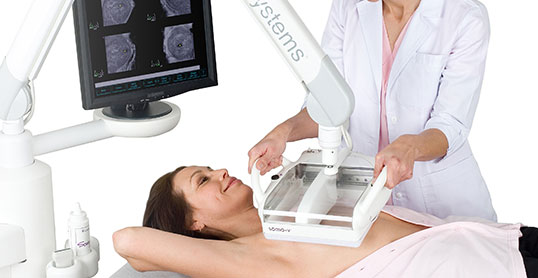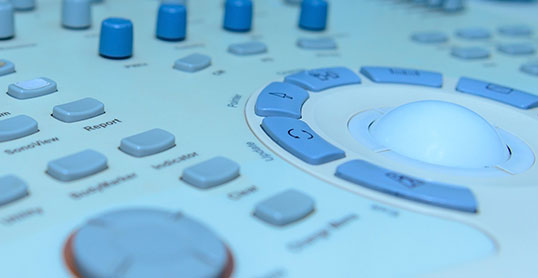
Benefits
Approved by Health Canada as a screening process
Safe for women of any age
Safe for pregnant women
Safe for implants
Ability to see through scar tissue
Radiation free
Pain free
Ability to see through dense breast tissue
Done by a certified sonographer
Read by a licensed radiologist


GROWTH
Clinical evidence is growing about the effectiveness of ultrasound for finding small, node-negative, invasive cancers missed by mammography. ABUS is designed for the screening environment, specifically for dense breast imaging. ABUS diminishes operator variability and creates 3D ultrasound volumes to enable comprehensive analysis and comparison to multi-modality exams.
Are You Dense?
When women are young, their breasts are made up of the specialized breast tissue that produces milk during lactation. This tissue is very thick, or dense. Thicker breast tissue makes it more difficult to identify abnormalities on a mammogram. On a mammogram film, tumours and thick tissue show up in white. This can cause missed cancerous tissue in the dense breast, making it difficult to see tumours especially in the early stages. Women who have dense breasts are also at a higher risk of developing breast cancer. Dense breast tissue is comprised of less fat and more connective tissue which appears white on a mammogram. Cancer also appears white on a mammogram thus tumours are often hidden behind the dense tissue. Women with a family history are definitely at greater risk, but 75% of women who get breast cancer have no family history of the disease. Women with dense breasts are also at increased risk for breast cancer. It is widely accepted that up to 40% of North American women and up to 70% of Asian women have dense breasts.
“Each woman’s breasts are different.”
A radiologist determines the density of a woman’s breasts by examining a mammogram. Request a copy of your mammography report from your referring doctor. Look for descriptions of your breast tissue. To find out more about your breast density, talk to your doctor and ask the question –do I have dense breasts? You should also be asking the women in your family if they know if they have dense breasts. To learn more about dense breasts, click here.
Each woman’s breasts are different and have varying amounts of fat and breast tissue. Breast density is measured as the total percentage of tissue in the breast: High breast density means there is more breast tissue compared to fat. Low breast density means there is more fat compared to breast tissue. Having high breast density (greater than 50%) is normal. Breast density affects what your breasts look like on a mammogram. Dense tissue has the potential to hide cancer on a mammogram and having dense breasts alone may increase a woman’s chance of developing breast cancer by 4-6 times as compared to women with fatty tissue.
For a more in-depth breakdown of Breast Density, click here.


